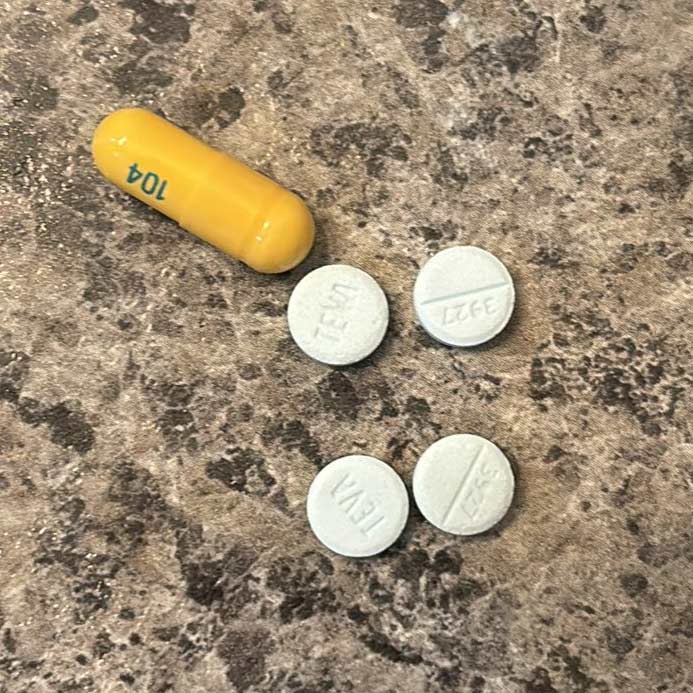Can you overdose on Valium? This drug, also known as diazepam, is a widely prescribed benzodiazepine medication used to treat anxiety, muscle spasms, and seizures. While generally safe when taken as directed, misuse of Valium can lead to dangerous overdose symptoms. As a controlled substance with potential for abuse, it’s critical that you understand the risks associated with this medication.
What is Diazepam (Valium)?
Diazepam, commonly known by its brand name Valium, is a powerful prescription medication belonging to the benzodiazepine class of drugs. This sedative is primarily used to treat anxiety disorders, alcohol withdrawal symptoms, and muscle spasms. It works by enhancing the effects of gamma-aminobutyric acid (GABA), a neurotransmitter that reduces brain activity and promotes relaxation.
Medical Uses and Effects
Diazepam is known for its calming effects on the central nervous system. Healthcare providers may prescribe it for various conditions, including:
- Anxiety disorders
- Insomnia
- Seizures
- Muscle spasms
- Alcohol withdrawal
Dosing and Administration
Proper dosing of diazepam is critical to its safe and effective use.
- Follow the dosage prescribed by your healthcare provider. Do not increase or decrease your dosage without speaking with them first.
- Take diazepam at the same time each day to maintain consistent levels in your bloodstream.
- Avoid taking more than your prescribed dose in an attempt to achieve stronger effects. This can lead to dangerous side effects and potential overdose.
- Do not stop taking diazepam suddenly without discussing with your doctor, as this can cause severe withdrawal symptoms. A gradual tapering of the dosage is typically recommended.
- Be aware that diazepam can build up in your system over time, especially in the elderly. Your doctor may need to adjust your dosage accordingly.
- Inform your doctor about all medications and supplements you are taking to avoid potentially dangerous interactions with diazepam.
- Store diazepam in a secure location away from children and pets to prevent accidental ingestion.
The dosage varies depending on the condition being treated, the patient’s age, and overall health status.
Generally, it is taken by mouth. However, in some medical settings, it may be administered through an IV or injected into a muscle.
Common Valium (Diazepam) Brand Names and Pill Descriptions
Brand Names:
- Valium (most widely recognized)
- Diastat
- Zetran
- Diazemuls
- Diazepam Intensol (oral solution)
Common Pill Descriptions:
Valium 2 mg
- Shape: Round
- Color: White
- Imprint: “ROCHE” on one side and “VALIUM 2” on the other
Valium 5 mg
- Shape: Round
- Color: Yellow
- Imprint: “ROCHE” on one side and “VALIUM 5” on the other
Valium 10 mg
- Shape: Round
- Color: Blue
- Imprint: “ROCHE” on one side and “VALIUM 10” on the other
Generic Diazepam 2 mg
- Shape: Round
- Color: White
- Imprint: Various, depending on manufacturer (e.g., “MYLAN 271”)
Generic Diazepam 5 mg
- Shape: Round
- Color: Yellow
- Imprint: Various, depending on manufacturer (e.g., “MYLAN 345”)
Generic Diazepam 10 mg
- Shape: Round
- Color: Blue
- Imprint: Various, depending on manufacturer (e.g., “MYLAN 477”)
Signs and Symptoms of a Diazepam, Valium Overdose
Recognizing the symptoms of a diazepam overdose is crucial for timely intervention. As a central nervous system depressant, excessive intake of this narcotic can lead to severe complications.
Physical Signs of Diazepam, Valium Overdose
The most common physical signs of diazepam overdose include extreme drowsiness, confusion, and impaired coordination. You may notice slurred speech, blurred vision, or difficulty maintaining balance. In severe cases, respiratory depression can occur, leading to shallow or slow breathing. Mixing diazepam with other substances, especially alcohol or opioids, can intensify these symptoms and increase the risk of overdose.
Cognitive and Behavioral Changes
During an overdose, cognitive functions can be profoundly impaired, leading to a range of symptoms. These may include memory lapses, difficulties with concentration, and sudden mood swings (National Institute on Drug Abuse). In certain cases, paradoxical reactions, such as heightened anxiety or increased agitation, might also be observed (Centers for Disease Control and Prevention). It’s crucial to understand that these symptoms can vary widely depending on the specific dosage, the substance involved, and individual factors like the person’s overall health and tolerance levels.
Research indicates that the severity and type of cognitive impairment during an overdose are influenced by several factors, including the specific substance ingested and the individual’s physiological response (National Institute on Drug Abuse). For instance, benzodiazepine overdoses are often associated with memory disturbances and paradoxical effects like agitation, particularly in those with a history of mental health conditions. These cognitive impairments can have lasting consequences, underscoring the importance of prompt medical intervention.
Severe Complications
In extreme cases, a diazepam overdose can lead to more serious conditions. These may include loss of consciousness, coma, or even death in rare instances. If you suspect an overdose, it’s crucial to seek immediate medical attention. Remember, the severity of symptoms can escalate rapidly, making quick action essential for preventing life-threatening complications.
List of Symptoms of Diazepam Valium Overdose
Because diazepam is a powerful sedative, taking higher-than-prescribed doses can lead to overdose and serious complications. Some of the symptoms of diazepam overdose include:
- Extreme sleepiness and difficulty waking up
- Slurred speech and confusion
- Loss of coordination and balance issues
- Difficulty breathing that may progress to respiratory depression
- Low blood pressure leading to dizziness when standing
- Unconsciousness or coma
These symptoms indicate a medical emergency. If you suspect an overdose in yourself or someone else, seek emergency medical help immediately. Call 911 or go to the nearest hospital emergency room.
While waiting for medical assistance, try to identify how much diazepam was ingested and when. This information can help healthcare providers determine the appropriate treatment plan. Monitor the person’s breathing, airway and level of consciousness. If they have vomited, turn their head to the side to prevent choking.
With prompt medical intervention, most diazepam overdoses can be managed successfully. However, in severe cases, overdose can lead to permanent disability or even death. So it’s crucial to seek emergency help at the first signs of potential overdose to give the best chance of a full recovery.
What Factors Increase the Risk of Overdose?
Physiological Risk Factors
Individuals with pre-existing health conditions face significantly higher risks when using diazepam. Individuals who use stimulants and have high blood pressure or heart disease are especially vulnerable to severe complications including seizures, strokes, and heart attacks. These underlying health conditions can exacerbate the depressant effects of diazepam, potentially leading to dangerous overdose situations.
Age and Mental Health Considerations
Young adults aged 18-25 with mental health disorders are at an elevated risk for opioid misuse, including diazepam. This demographic often struggles with anxiety, depression, or other psychiatric conditions, which may lead to self-medication and increased likelihood of overdose. The combination of age-related impulsivity and mental health challenges creates a perfect storm for substance abuse.
Polysubstance Use and Comorbidity
Polysubstance use – the simultaneous use of multiple drugs – significantly increases overdose risk. Mixing diazepam with other depressants like alcohol or opioids can lead to dangerous respiratory depression. Additionally, psychiatric comorbidity, or the presence of multiple mental health disorders, is a notable predictor of drug overdose in young people. This complex interplay of substances and mental health issues can result in unpredictable and potentially life-threatening reactions.
How to Use Diazepam Safely and Avoid Overdose
Understanding Proper Dosing
Diazepam, commonly known as Valium, is a potent medication that requires careful administration. Always follow your doctor’s prescribed dosage, as overdosing on this narcotic can have serious consequences. The appropriate dose varies based on factors like age, weight, and medical condition. Never adjust your dosage without consulting your healthcare provider.
Risks of Mixing Diazepam with Alcohol
Combining diazepam with alcohol can lead to severe respiratory depression, loss of consciousness, and even death. Both substances are central nervous system (CNS) depressants, which means they can amplify each other’s sedative effects. The U.S. Food and Drug Administration (FDA) has issued warnings about the dangers of using benzodiazepines like diazepam in conjunction with alcohol, highlighting the increased risk of overdose and adverse effects 1 2.
Increased Overdose Risk
The combination can lead to profound sedation and respiratory failure, which can be fatal 1.
Impaired Coordination
Users may experience significant impairment in coordination and judgment, increasing the risk of accidents.
Interaction with Opioids
The combination of diazepam with opioids (such as oxycodone, hydrocodone, and morphine) is particularly dangerous. Both drug classes depress the CNS, which can lead to life-threatening respiratory depression 3.
Boxed Warnings
Both opioids and benzodiazepines carry FDA boxed warnings regarding the risks of concurrent use, emphasizing the potential for overdose 3 4.
Statistics
A significant percentage of overdose deaths involving benzodiazepines also involve opioids, indicating the heightened risk when these substances are mixed 4.
Antidepressants and Other Medications
Certain antidepressants can also interact negatively with diazepam, increasing the risk of side effects such as drowsiness and slowed breathing 5. It is crucial for patients to inform their healthcare providers about all medications and supplements they are taking to avoid dangerous interactions.
Recognizing Warning Signs
Being aware of overdose symptoms is crucial for safe diazepam use. Watch for signs such as extreme drowsiness, confusion, slurred speech, or difficulty breathing. If you experience these symptoms or suspect an overdose, seek immediate medical attention. Remember, prompt action can be life-saving in cases of diazepam overdose.
Proper Storage and Disposal
Store diazepam in a secure location, out of reach of children and pets. Never share your prescription with others, even if they have similar symptoms. When your treatment ends, dispose of unused medication properly to prevent accidental ingestion or misuse.
Conclusion
In conclusion, recognizing the signs of diazepam overdose is crucial for preventing potentially life-threatening complications. While Valium can be an effective medication when used as prescribed, misuse or excessive intake carries serious risks. If you suspect that you or someone else has overdosed on diazepam, seek immediate medical attention.
Remember that Valium is not approved for weight loss purposes, and using it in this way is both dangerous and ineffective. Always consult your healthcare provider about safe and appropriate methods for managing anxiety or achieving weight loss goals. By staying informed and using medications responsibly, you can protect your health and well-being while avoiding the hazards of diazepam overdose.








